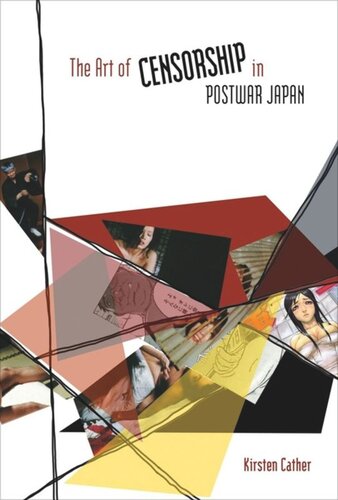

Most ebook files are in PDF format, so you can easily read them using various software such as Foxit Reader or directly on the Google Chrome browser.
Some ebook files are released by publishers in other formats such as .awz, .mobi, .epub, .fb2, etc. You may need to install specific software to read these formats on mobile/PC, such as Calibre.
Please read the tutorial at this link: https://ebookbell.com/faq
We offer FREE conversion to the popular formats you request; however, this may take some time. Therefore, right after payment, please email us, and we will try to provide the service as quickly as possible.
For some exceptional file formats or broken links (if any), please refrain from opening any disputes. Instead, email us first, and we will try to assist within a maximum of 6 hours.
EbookBell Team

4.1
50 reviewsIn 2002 a manga (comic book) was for the first time successfully charged with the crime of obscenity in the Japanese courts. In The Art of Censorship Kirsten Cather traces how this case represents the most recent in a long line of sensational landmark obscenity trials that have dotted the history of postwar Japan. The objects of these trials range from a highbrow literary translation of Lady Chatterley’s Lover and modern adaptations and reprintings of Edo-period pornographic literary “classics” by authors such as Nagai Kafu to soft core and hard core pornographic films, including a collection of still photographs and the script from Oshima Nagisa’s In the Realm of the Senses, as well as adult manga. At stake in each case was the establishment of a new hierarchy for law and culture, determining, in other words, to what extent the constitutional guarantee of free expression would extend to art, artist, and audience.
The work draws on diverse sources, including trial transcripts and verdicts, literary and film theory, legal scholarship, and surrounding debates in artistic journals and the press. By combining a careful analysis of the legal cases with a detailed rendering of cultural, historical, and political contexts, Cather demonstrates how legal arguments are enmeshed in a broader web of cultural forces. She offers an original, interdisciplinary analysis that shows how art and law nurtured one another even as they clashed and demonstrates the dynamic relationship between culture and law, society and politics in postwar Japan.
The Art of Censorship will appeal to those interested in literary and visual studies, censorship, and the recent field of affect studies. It will also find a broad readership among cultural historians of the postwar period and fans of the works and genres discussed.